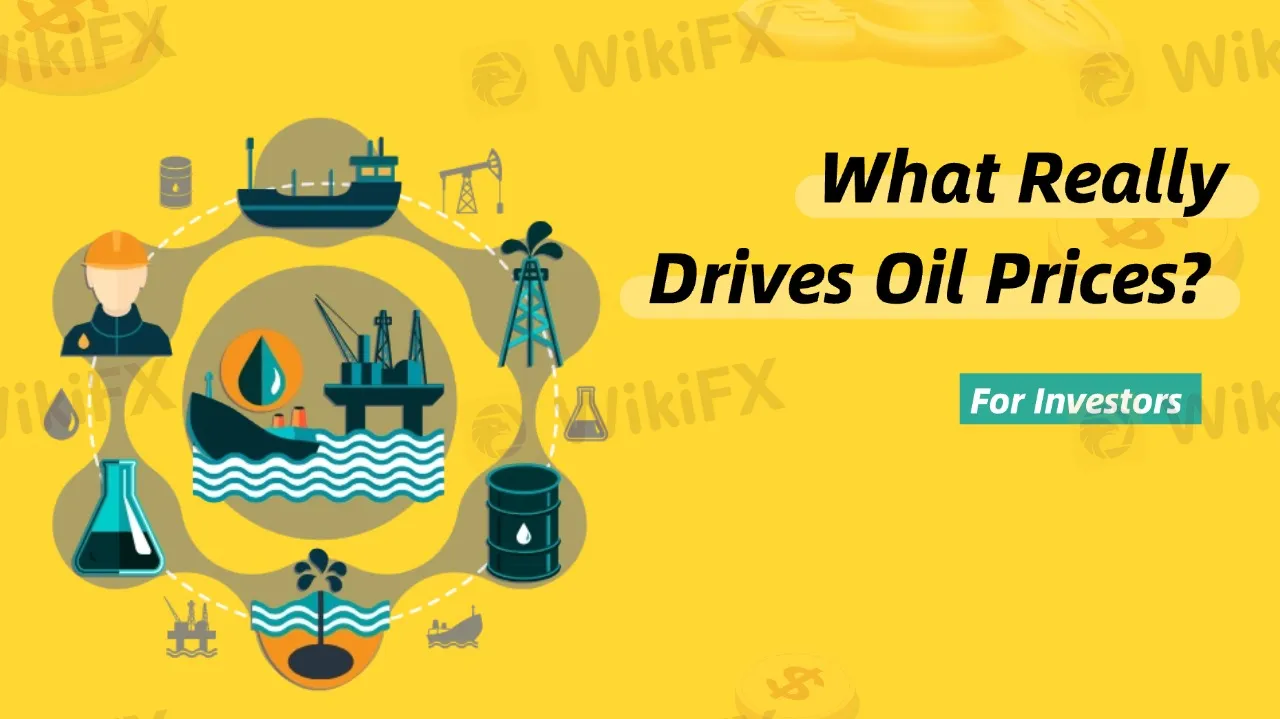What Really Drives Oil Prices?
Abstract:For investors, fluctuations in oil prices represent both opportunities and risks. Understanding the factors behind these price changes can help investors make more informed investment decisions.

To grasp the reasons behind oil price changes, it is essential to keep an eye on key reports and data. The American Petroleum Institute (API) and the U.S. Department of Energy (EIA) release weekly reports on oil supply and demand, particularly concerning oil inventory changes. These reports inform investors about the current market conditions and the potential direction of oil prices.
Additionally, OPECs production decisions and the political situation in other countries are also crucial. Investors need to closely monitor this information, as it can lead to rapid changes in oil prices. If oil inventories decrease or OPEC decides to cut production, oil prices are likely to rise; conversely, if inventories increase or production is raised, oil prices may fall.
Oil price fluctuations are not determined by a single factor but by the combined influence of various elements. OPEC has a significant impact on oil prices, as its members adjust production quotas to influence global oil supply. Reducing production typically leads to higher oil prices, while increasing output could cause prices to drop. Moreover, political events in the Middle East, such as wars or economic sanctions, often disrupt oil supply, pushing prices higher. U.S. oil inventories and production also play a vital role, with weekly reports reflecting supply changes that influence oil prices. As alternative energies like solar power and natural gas rise in prominence, oil faces growing demand pressure, which could put downward pressure on prices. Global economic performance and industrial demand are also key drivers, with oil prices rising during economic growth and falling during slowdowns. Seasonal factors, such as increased gasoline demand in summer or heating oil demand in winter, can also cause oil price fluctuations.
In summary, oil price changes result from a combination of factors, including the policies of producing countries, geopolitical events, the threat of alternative energies, and the overall performance of the global economy. Investors need to monitor these factors closely, especially important supply and demand reports and political developments. By understanding these dynamics, investors can better predict oil price trends and make informed decisions. For ordinary consumers, staying informed about oil price changes can also help manage the impact of price fluctuations on daily life.

Read more

Broker Comparsion: FXTM vs AvaTrade
FXTM and AvaTrade are two well-established online brokers offering forex and CFD trading across global markets. Both enjoy strong reputations and high ratings on WikiFX—FXTM holds an AAA overall rating, while AvaTrade scores 9.49/10, indicating they’re regarded as reliable choices by the community. However, since brokers have great reputation in the industry, how do we know which one is more suitable for individuals to invest in? Today's article is about the comparison between FXTM and AvaTrade.

Pi Network: Scam Allegations Spark Heated Debate
A whistleblower report has surfaced, casting doubt on the legitimacy of Pi Network, alleging psychological manipulation, opaque operations, and potential financial exploitation. What is your take on this?

Webull Listed on Nasdaq Following SPAC Merger with SK Growth
Webull and SK Growth complete their business combination, with Webull now trading under the ticker “BULL.” App hits 50 million downloads worldwide.

UN Warns Asian Scam Operations are Spreading Worldwide
UN report reveals Asian scam operations expanding globally, targeting Africa, Latin America with cyberfraud, generating billions amid crackdowns.
WikiFX Broker
Latest News
Love, Investment & Lies: Online Date Turned into a RM103,000 Scam
Broker’s Promise Turns to Loss – Funds Disappear, No Compensation!
Broker Took 10% of User's Profits – New Way to Swindle You? Beware!
Pi Network: Scam Allegations Spark Heated Debate
Broker Comparsion: FXTM vs AvaTrade
Account Deleted, Funds Gone: A New Broker Tactic to Beware Of?
StoneX Subsidiary, Gain Global Markets Bermuda, Penalized for Trading Misconduct
El Salvador and U.S. Launch Cross-Border Crypto Regulatory Sandbox
The Instagram Promise That Stole RM33,000
Coinbase Launches Bitcoin Yield Fund for Institutional Investors
Rate Calc
